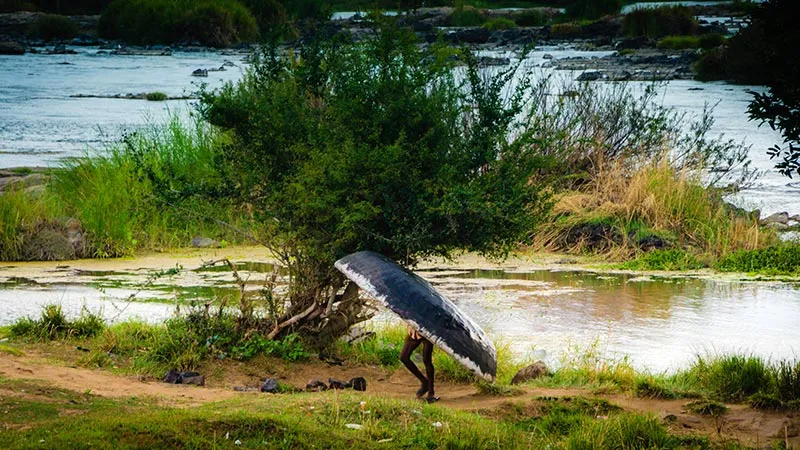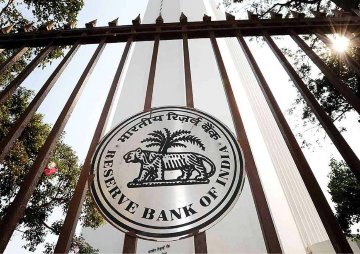
The recent ugly turn of events in the Cauvery river water dispute between upstream Karnataka and downstream Tamil Nadu bear ample testimony of the extreme clashes of egos on the side of the political leadership eventually flowing down to the levels of the common man like a deluge. The chequered history of hydro-political relations between the two states has been marked by conflicts, agreements, defections, court orders and "blame games" from either parties — way back from the mid-1850s.
On February 5, 2007, the Cauvery Tribunal finally declared the Final Award for allocation of the water between the states of the basin. The Tribunal determined that the total utilisable waters of the Cauvery for the states on the basis of 50% dependability to be 740 tmc (20,954 MCM). In the process, it allotted 419 tmc (as against its demand of 562 tmc) of the Cauvery water to Tamil Nadu; 270 tmc (as against its demand of 465 tmc ft) to Karnataka; 30 tmc to Kerala and 7 tmc to Pondicherry. While allocating the 726 tmc of water, the Tribunal has "reserved" 10 tmc for "environmental protection" and 4 TMC for "inevitable escapages to the sea."
In many of my previous writings, especially in my paper published in the journal, Water Policy, with Jayanta Bandyopadhyay in 2009, I had criticised this simple-average-based allocation, terming this phenomenon as "arithmetic hydrology." Such a paradigm of water allocation based on "arithmetic hydrology" has been a proven disaster across the world, and Cauvery river allocation exemplifies that. The basis of reservation for "environmental protection" and "inevitable escapages to the sea" is utterly ad hoc, and does not even conform to the global scientific knowledge of environmental flows.
However, one needs to understand the deeper economics embedded in the conflict. The prime driver of the conflict is government’s inadvertent incentivisation for paddy cultivation. The Cauvery basin as a whole has witnessed a massive increase in the agricultural area in the 1990s, as compared to the 1980s. This increase happened mostly in the Karnataka part of the basin (by almost 25%), while the area in Tamil Nadu basin remained more or less the same. Karnataka has been a late starter in irrigation development in the basin, and hence, with increased infrastructure development for water supply augmentation, it brought more land under agriculture.
During the 80s and the 90s, water availability has been a prime mover in terms of higher acreage of paddy, the most water consuming crop grown in the region. As a result, there is no doubt that the demand for water for agriculture has increased in the Cauvery basin. According to an estimate made in our paper, the increase is mostly noted in the Kharif paddy and more significantly in the summer paddy of Karnataka.
More importantly, the cross-incentivisation of paddy production was prevalent through the Minimum Support Price (MSP) regimes. With the increasing acreage of paddy, supply augmentation plans made independently by the states are bound to lead to serious conflicts of interest. Though initially finger millet (ragi) used to be a staple crop in the region, its acreage has not increased. As such, crop-water requirement of ragi is merely 5 to 10% of that of paddy. The MSP of paddy increased at a much faster rate than that of ragi. It is a well-known fact that MSP for essential commodities create a reference for market prices. With relative market prices moving in favour of paddy, there has been shifts in acreage from ragi to paddy, thereby increasing total water consumption manifold.
On the other hand, the demand-side situation cannot be ignored. The public distribution system has been selling rice at a much lower price than other staple crops, thereby shifting consumption towards rice. Again, the real cost of irrigation waters is diminishing. This, in no way, can ensure efficient demand side management of agricultural waters.
< style="color: #163449;">Problems of definitions of property rights
The extreme principle of water allocation suggests the existence of three definitions of property rights: Harmon, History and Hobbes. Harmon refers to the doctrine that bestows primary rights to those who own land at the source of the water (If water falls on my roof, it is mine). History confers primary rights to historical users of water irrespective of their geographical location. Hobbes identifies rights as the final result of awards obtained through negotiations. In the cases of trans-boundary water disputes, usually the upstream parties exercise Harmon to divert water for its own use, while the downstream parties stick to the principle of History and natural rights, in terms of its argument. Finally, the two parties indulge in negotiations.
In the case of the Cauvery basin, Karnataka has long taken the stand that the late irrigation development in that state should not entail any reduction of its rights to make the fullest potential utilisation of the Cauvery waters for agricultural and other development. Their argument rests on the fact that a downstream state cannot make a claim when there is scarcity of water and inadequacy in upstream areas. This implies that Karnataka has been exercising the Harmon doctrine for its property rights definition.
On the other hand, taking cue from the important 1924 agreement between the princely state of Mysore (Karnataka) and Madras presidency (now Tamil Nadu), Tamil Nadu feels that given the long history of water use, farmers in Cauvery delta irrigating and producing paddy should not be denied water. While, according to the agreement, the farmers in Karnataka can definitely use the waters, there has to be a limit on the volume of water and area to be irrigated so that upstream water use does not jeopardise the longstanding downstream uses in Tamil Nadu.
At the same time, Tamil Nadu recognises that the basin area contribution to river flow and other factors need to be given the due importance in water sharing. The state takes a legalistic stance based on the principle of prescriptive rights as given in the 1924 agreement, which translates to the principle of prior appropriation or the doctrine of history.
With water being a state subject in the Constitution, both doctrines have their valid standing. Hence, the conflict can be construed as being rooted in divergent definitions of property rights by the conflicting states over the river water. The Hobbesian negotiation mode of resolution of the dispute has failed. The existing statutes of the Inter State Water Dispute (ISWD) Act as also those existing in the Indian Constitution seem inadequate to resolve this dispute. Again, the Final Award of the CWDT does not seem to have helped the cause of allocation.
< style="color: #163449;">A longer term approach
One needs to understand that the Cauvery basin is not meant for supply augmentation leading to paddy cultivation: the water is already over-allocated. Therefore, two forces need to work here: economic instruments, and institutional approach. First of all, the perverse incentive structure through the MSP regime of paddy has to be reversed here. The Government might have a policy for promoting wheat and paddy for its own avowed and defined "food security" purpose, but the water-scarce regions like the Cauvery basin are not meant for producing such crops. Therefore, there needs to be a more innovative pricing approach with region-specific MSPs for crops. In fact, bringing in the notion of comparative advantage in trade, regions with better endowment of water should only be encouraged to produce water-intensive crops, while the relative terms-of-trade need to move towards drier crops like ragi in regions like Cauvery basin. It is from this perspective, "virtual water" (water embedded in crops) trade need to be promoted, without resorting to disastrous plans like interlinking of rivers. Secondly, from the institutional perspective, there is an utmost need for a river basin organisation (RBO) above the states as proposed by Jayanta Bandyopadhyay in a recent article in EPW. It is only a strong RBO that can take a basin-level approach to water management. For reasons of parochial petty politics, the Centre has so far been apprehensive of setting up RBOs with adequate regulatory powers. One needs to understand that the conciliation does not lie in ad-hoc awards by Tribunals or orders by courts that can result in backlashes through clashes of egos. A longer-term solution lies in a holistic economic-ecosystemic-institutional approach.
The views expressed above belong to the author(s). ORF research and analyses now available on Telegram! Click here to access our curated content — blogs, longforms and interviews.




 PREV
PREV


